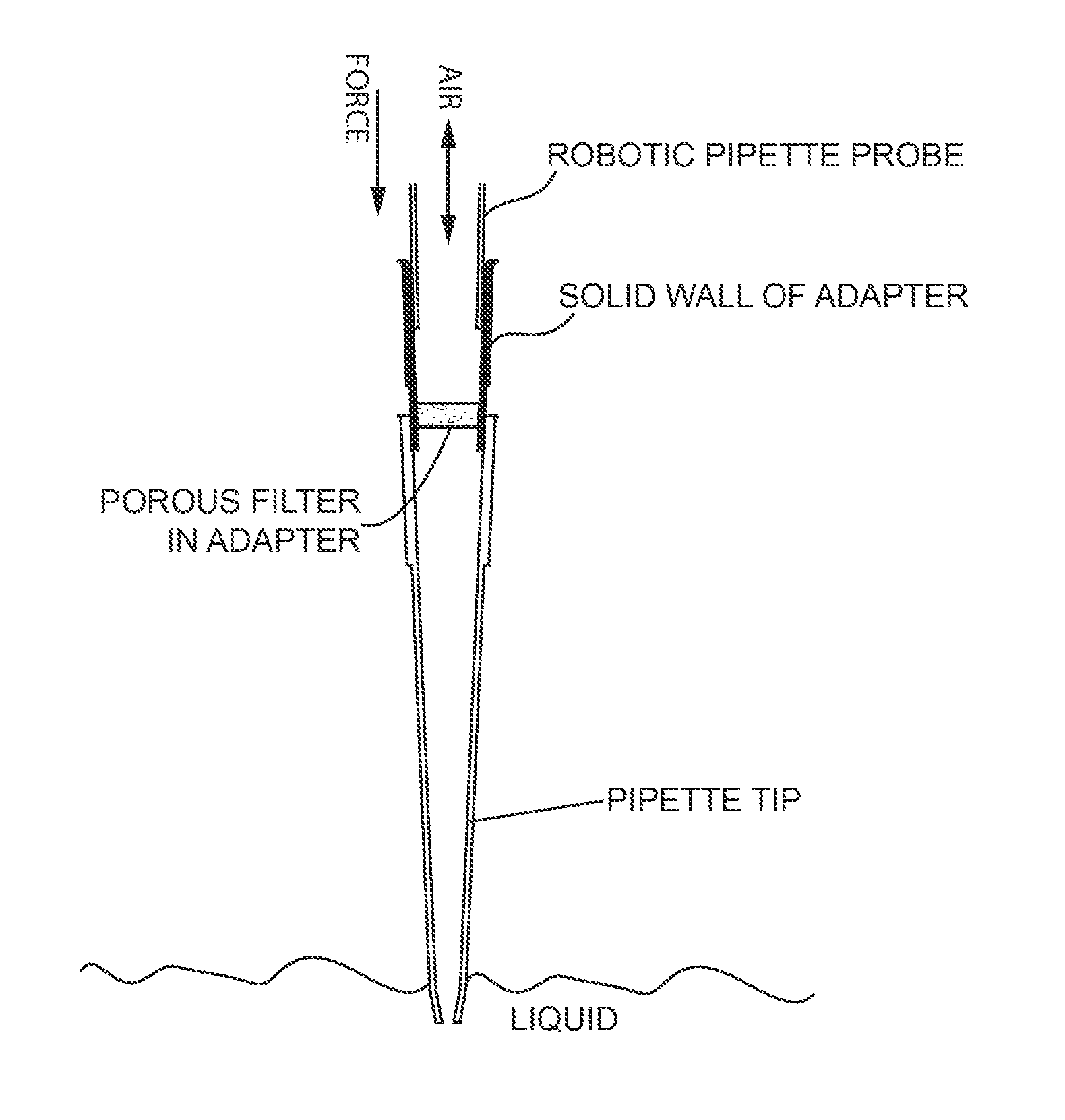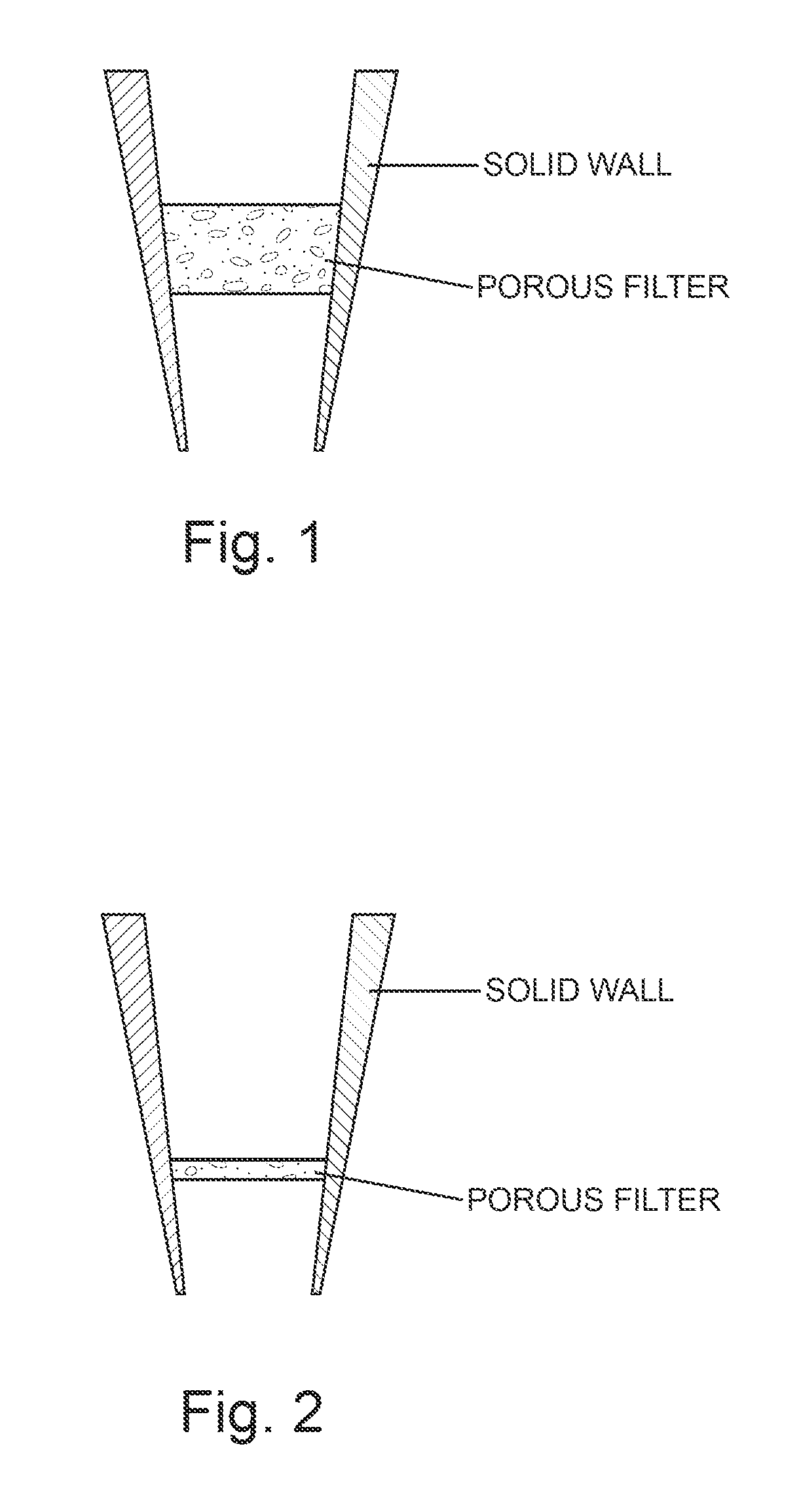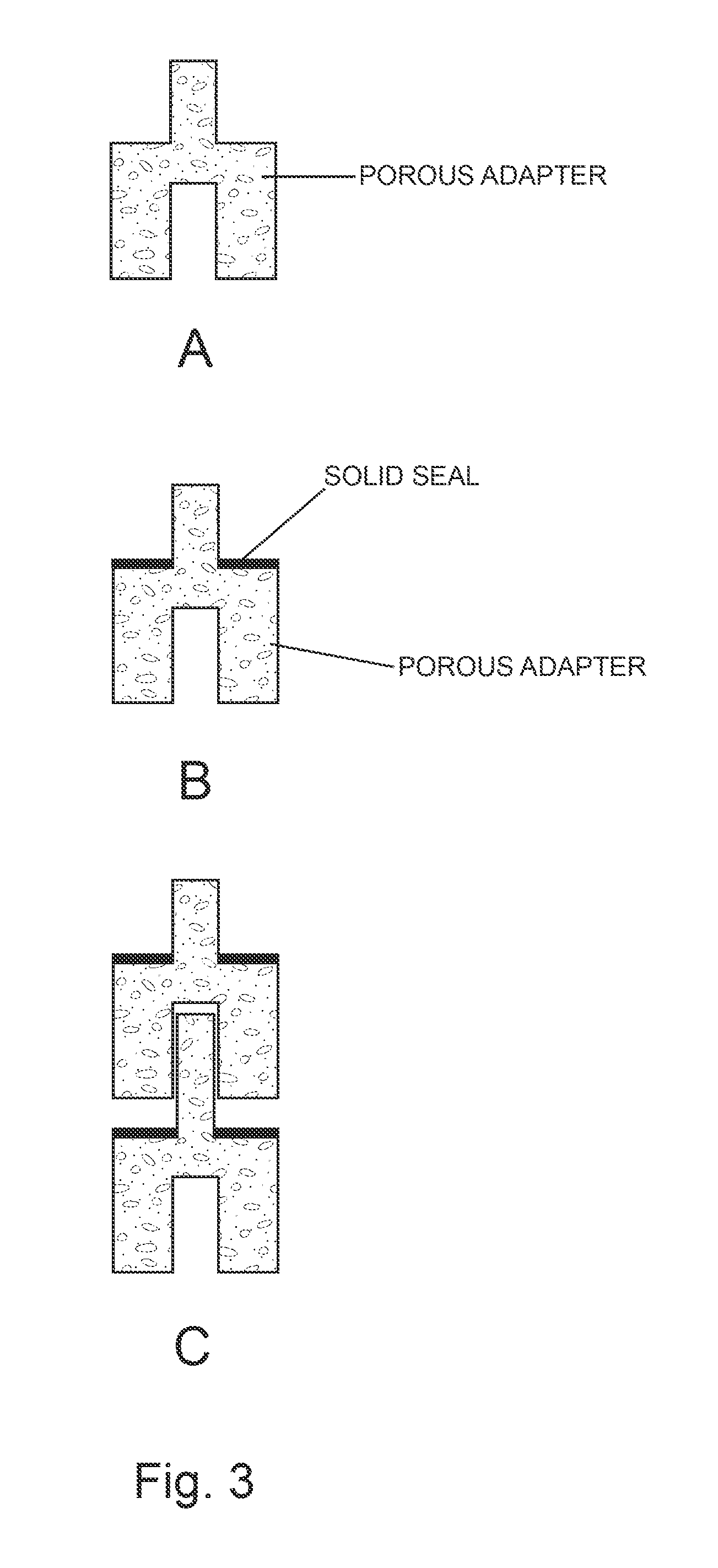Filtered Adapter for Pipettors
a technology of filtered adapters and pipette tips, which is applied in the field of stackable adapters, can solve the problems of large volume of space occupied by robot liquid handling devices, laborious labor to deliver pipette tips to robotic liquid handling devices in a fast and precise manner, and save laboratory and bench top space , the effect of enhancing the use of laboratory and research spa
- Summary
- Abstract
- Description
- Claims
- Application Information
AI Technical Summary
Benefits of technology
Problems solved by technology
Method used
Image
Examples
example 1
[0072]Step one: A pipetting device capable of performing 96 simultaneous pipetting events for 96-well plates is programmed to engage 96 pipettors into 96 adapters containing filters stacked in a first rack, remove the adapters from the first rack and insert them into 96, 200 μl pipette tips contained in a second rack. After insertion of the adapters into the pipette tips, the pipette tips with attached adapters are removed from the second rack by the pipetting device and are inserted into a reservoir containing a primary antibody immunoglobulin (IgG) fluid. A desired volume, for example 50 μl, is drawn into the 96 pipette tips by the pipetting device. The pipette tips are then removed from the primary antibody IgG fluid and positioned over a 96-well titer plate. The 50 μl of primary antibody IgG fluid is then expelled by the pipettor from each pipette tip into wells of the 96-well titer plate. After a preset time, the 50 μl of primary antibody IgG fluid are removed from ...
example 2
Solid Phase Extraction
[0078]Step one: A pipetting device capable of performing 96 simultaneous pipetting events for 96 well plates is programmed to engage 96 pipettors into a layer of 96 adapters containing filters stacked in a first rack and insert them into a layer of 96, 200 μl unfiltered pipette tips stacked in a second rack. After insertion of the adapters into the pipette tips, the pipette tips with attached adapters are removed from the second rack and are inserted into a reservoir containing the extraction fluid. A desired volume, for example 50 μl, is drawn into the 96 pipette tips by the pipetting device. The pipette tips are then removed from the extraction fluid and positioned over a 3M Empore 96-well extraction filtered plate (3M, St. Paul, Minn.). The 50 μl of extraction fluid is then expelled from each pipette tip into each well of the 96-well extraction filtered plate. After a preset time, the 50 μl of extraction fluid are removed from the 96-well extraction filtered...
PUM
| Property | Measurement | Unit |
|---|---|---|
| length | aaaaa | aaaaa |
| volumes | aaaaa | aaaaa |
| volumes | aaaaa | aaaaa |
Abstract
Description
Claims
Application Information
 Login to View More
Login to View More - R&D
- Intellectual Property
- Life Sciences
- Materials
- Tech Scout
- Unparalleled Data Quality
- Higher Quality Content
- 60% Fewer Hallucinations
Browse by: Latest US Patents, China's latest patents, Technical Efficacy Thesaurus, Application Domain, Technology Topic, Popular Technical Reports.
© 2025 PatSnap. All rights reserved.Legal|Privacy policy|Modern Slavery Act Transparency Statement|Sitemap|About US| Contact US: help@patsnap.com



